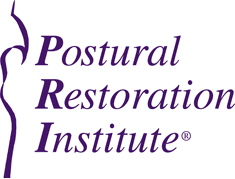PRI is a type of physical thrapy that is very different from the traditional model we were all taught in school.
In class we were typically taught that if the knee hurt, it was probably the knee that was the problem. The ankle and hip (joints above and below the painful area) should be screened to make sure they weren’t part of the problem, but the pain was probably coming directly from the knee. Then we should measure its range of motion and muscular strength. The treatment plan from there was easy - stretch what was too tight and strengthen what was too weak. Voila! Your patient is healed. Well, that was all good in theory, but it missed a lot.
Our brains and bodies are extraordinarily complex and for good reason. The brain takes in information from our vestibular, somatosensory, and visual systems to know where we are in space and what things/obstacles are around us. This lets us know how to move our bodies through space to end up at our destination in the safest way possibly. Put simply, our body depends on constant, subconscious neurological input to move our musculoskeletal system properly and without pain.
Traditional orthopedic physical therapy does not take this into account. PRI heavily bases it’s intervention with this in mind. First, we must feel and sense what muscles we are activating during an activity and know (without looking) what position our body is in while performing that exercise. If we cannot accomplish this, no matter how many exercise our patients do, we will never make them truuely functional. We cannot walk around do our daily tasks if we are having to constantly look at the position of our body to know where we are. If we cannot sense and feel a muscle during an exercise, our brain will be unable to utilize it when we are distracted from talking with our family or trying to get some work done.
Traditional orthopedics also assumes that our musculoskeletal system is always in an ideal position. This is simply not the case. Overactive muscles, surgical history, pain, and many other things will cause us to hold our pelvis, ribcage, or head in positions that are less than ideal. When this occurs, our muscles and joints are not lined up the way in the way they were designed. When things are not aligned properly, we cannot use properly muscles to move the joints and/or the joints will not have normal range of motion. This does not always cause pain, but it will always cause dysfunction that will eventually cause pain.
PRI evaluations assess the position and function of all areas of the body. We are then able to use this information to help us determine where to start our intervention. Should we start at the neck where our patient’s pain is? Or should we start at the pelvis as it’s faulty position causes compensations all the way up the spine into the neck? We also use this data to help us understand how successful we are with our approach.
Traditional physical therapy also does not discuss the diaphragm in any length. We are taught that is our main respiratory muscle, is innervated by the phrenic nerve at cervical spinal levels 3-5, and that it may not function with certain spinal injuries or diseases. However, as the diaphragm attaches to the front of the lumbar spine (lower back) and the back surface of the lower ribs, it has huge orthopedic impact. When this muscle is not in the right position, we cannot breathe appropriately. Because the number one goal of any human body is to breathe, we will compensate and find a way to do it. This puts us in awful postures and causes us to use muscular compensation 20-24,000 times a day! If we do not intervene on a dysfunctional diaphragm to allow our patients to breathe better, get out of a cycle of fight-or-flight nervous system dysfunction, and put our musculoskeletal position in the correct pattern, how in the world are we supposed to bring any relief to our patients?
This model of physical therapy is perfect for anyone that has pain, wants to enhance performance, and become more functional. If you have tried physical therapy or other interventions in the past that have delivered no or limited results, give PRI a try.
Integrate 360 Physcial Therapy is the only certified PRI clinic in the greater St. Louis area. In our clinic you will be evaluated and work one-on-one with the same PRI certified therapist. For more information or to schedule an evaluation, call us at 314-733-5000 or email us at Lesley@Integrate360PT.com or Nancy@Integrate360PT.com .
Written by Lesley Callaham February 1, 2018

